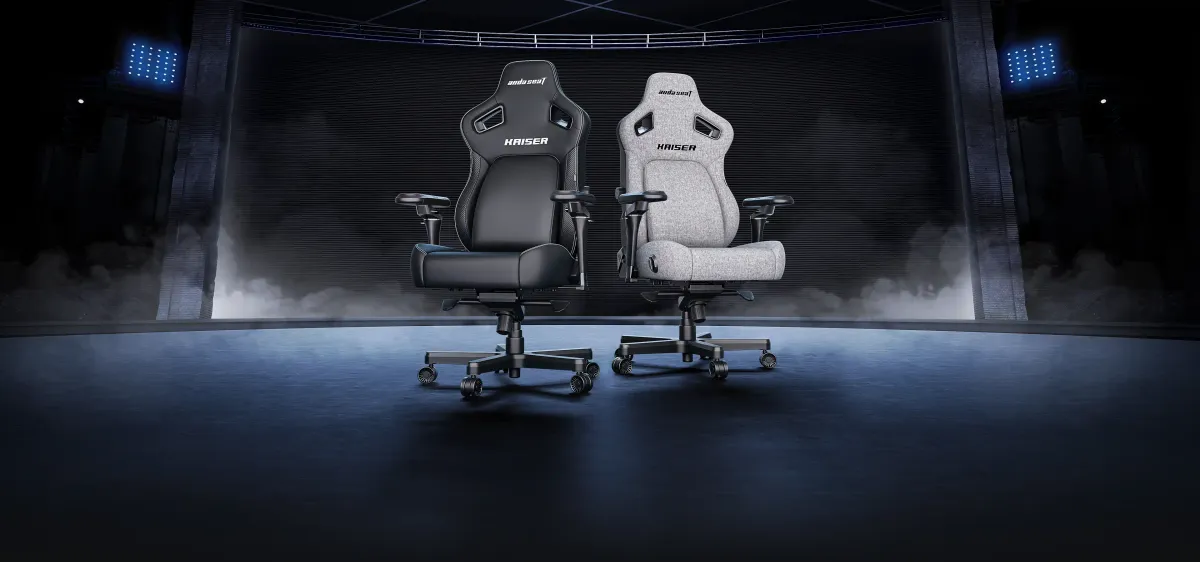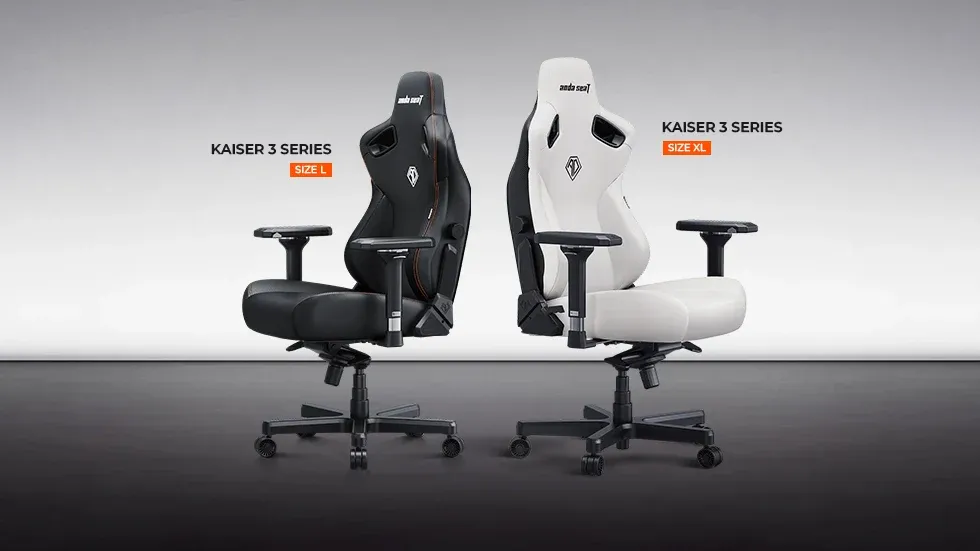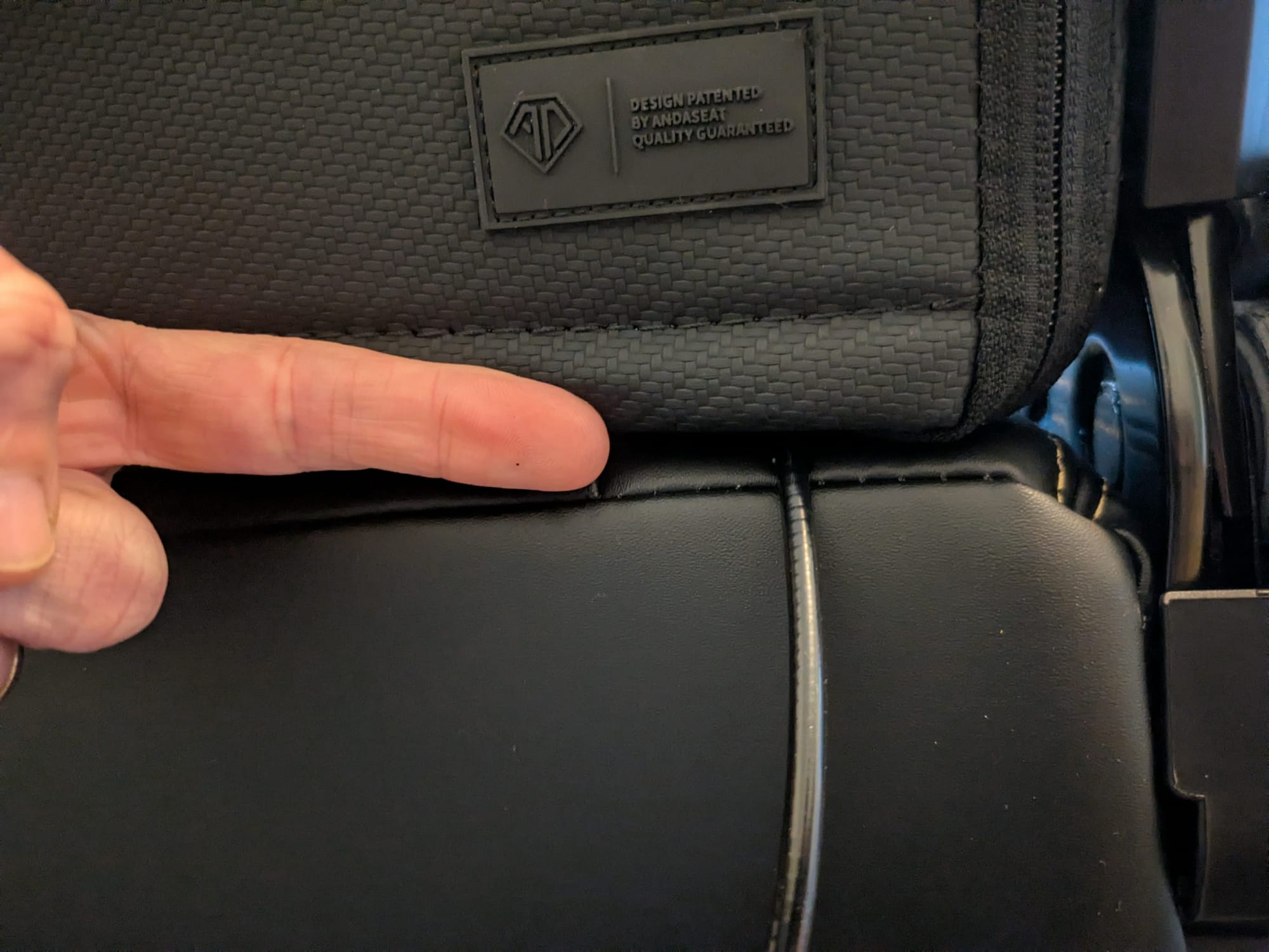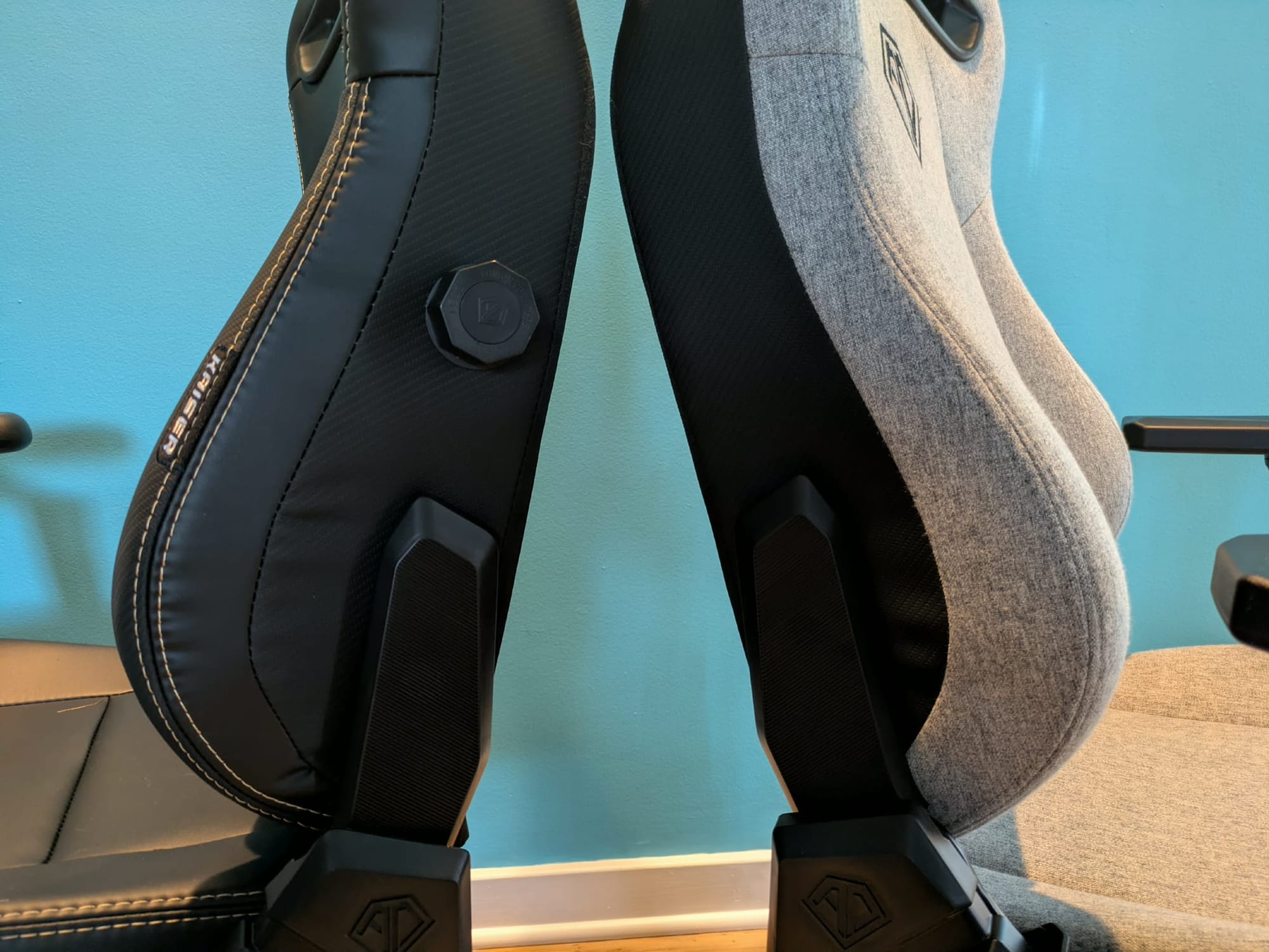
AndaSeat’s Kaiser 3 and 4 gaming chairs bring a lot to the table, justifying their hefty price tags but carrying a few small annoyances along the way. In both cases, their general build quality, comfort, and range of adjustment options are very solid, able to support a variety of frames and body types. The main difference comes in that range of options; the 3 is priced (at time of writing) $70 cheaper than 4, with far fewer of the many knobs and customization features. However, it may be the better fit because of the subtlety those features introduce. I refer you to our prior review of the 3 for some technical details, and I join my learned colleague Henry's evaluation. The 4 hides some of its best features, and the urge to provide the user with options might have put some focus on the wrong places. Overall, those minor technical complaints do little to inhibit the quality of a sturdy, well-built chair that’s going to stand up to long periods of use over many years.
At its most basic, both versions of the Kaiser do deliver in terms of quality and comfort. The materials strike a good balance between firmness and breathability. Kaiser 4 has a leather seat which, surprisingly, has kept itself clean in my house with pets, while the Kaiser 3’s linen has slightly better breathability. The cold-cure foam contours comfortably to the neck and back, maintaining its shape reasonably well even after extended use. They seat you nicely without molding to your body and keep you upright without making you feel stiff. I work from home, and for long stretches, both chairs are a noticeable improvement over a standard office chair. The many options to customize it add to the comfort and the specific needs of your body.

Visually, they also manage to strike a welcome balance between gamer flair and professional restraint. There are no garish colors or over-the-top accents, just a clean, modern profile. The high backs are noticeable in calls or on stream, but don't call attention to themselves…mostly. The “AndaSeat” emblazoned across the back and on the magnetic headrest is the one exception, daring you to keep your head still or turn yourself into a walking (sitting?) advertisement for the brand.
Assembly is straightforward, with sturdy parts that fit together cleanly. It’s an almost painless process, with some small oversights that I hope the team remedies soon. For the Kaiser 4 specifically, assembly requires connecting two cables together that are both hidden by internal components of the chair. The instructions only tell you where one of the cables is located, and that goes both for the written instructions and the official video. It’s a minor annoyance, but one that does directly affect the chair’s functionality. Another small issue with the instructions relates to the Kaiser 4’s adjustment features. They are nice and effective, but in some cases, so subtle that it’s unclear what exactly the various nobs and switches do. I’m not above some experimentation, but for something tooled towards customization, you would think they’d be clearer about advertising these features. The Kaiser 3 was also almost effortless, with a few instances of screws being difficult to thread properly at first.

Once you’ve built your chair, those features do make a big difference in usability.
In both cases, the chair’s overall proportions are generous, with an 86.5 cm backrest and 54 cm-wide seat base, providing broad support for a range of body types. (These may differ depending on the specific size of your purchase, as Andaseat offers a range of options, in both size and color.)

AndaSeat touts multidirectional armrests in some of its premium options capable of moving in almost every direction: up, down, forward, back, left, right, and even splitting upward. While this flexibility sounds impressive on paper, in practice, the design feels overengineered. The fold-up motion, which my versions didn’t contain, seems more gimmick than useful. I don’t know when I would need my hands angled upwards for a long enough period that I would get tired doing it. The real issue lies in the lack of a locking mechanism. With no way to fix the armrests in place, their otherwise impressive adjustability becomes a minor source of frustration. Their wider stance may also be problematic for users working with compact desks. I have a nice wooden desk, but I would have problems if I ever wanted to move in close. The height range, at around 6.5 cm of adjustment, will suit most setups but falls short for some desk sizes or unconventional configurations. I have a nice wooden desk, but between the chair’s height and the width of the armrests I would have problems if I ever wanted to move in close.

The Kaiser 4’s adjustable lumbar support system is one of the chair’s best features, though it takes some fine-tuning to get right. Controlled via side-mounted dials, the pad can move vertically and in depth, allowing for up to 30mm of adjustment and a tilt range between 0 and 24 degrees. These options offer real support once dialed in, but the process is less intuitive than it should be, and smaller users may need to experiment before finding the right balance. The reclining function offers angles between 90 and 135 degrees, with an optional rocking motion that feels smooth and stable. The magnetic headrest is a thoughtful touch, easily repositioned to match different postures or heights.
All of this is contextualized by the fact that the Kaiser 4 has a price point of $499.00 and the Kaiser 3 comes in at $429 (again, with some allowance for different features). That first total has come down recently from a higher peak, which I think is fair given the small but non-trivial issues. Overall, either char is worth such an investment for heavy use, but the subtlety of the 4’s extra features may make it unnecessary to go for the extra expense. The Kaiser 3 is a great option. While it may lack some of the lumbar support, the general build quality and lower price make that hardly a major issue. The customization features are solid, the materials are aesthetically appealing but well-tuned, and it does its most important job fantastically: holding you in a comfortable position while you need to be seated. If you’re in a position where you would consider making an investment in a premium chair, this is a very worthy choice.
Andaseat Kaiser 4 Gaming Char
Great
The AndaSeat Kaiser 4 is a premium gaming and office chair that delivers excellent comfort, durability, and adjustability. Its sturdy construction, supportive materials, and generous dimensions make it suitable for extended use and a variety of body types. The chair blends professional aesthetics with gamer sensibility, offering a refined look that fits both home offices and streaming setups. However, some of its strengths are undermined by unclear instructions, hidden features, and a few overcomplicated design choices. Despite these minor flaws, the Kaiser 4 justifies its price with long-term comfort and robust build quality.
Pros
- Excellent build quality and materials that balance firmness and breathability
- Comfortable for long work or gaming sessions
- Highly adjustable lumbar support and backrest
Cons
- Some features are poorly explained or unintuitive to use
- Assembly instructions omit small but important details
- Wide armrest stance can be awkward for smaller desks
This review is based on a retail copy provided by the publisher.
